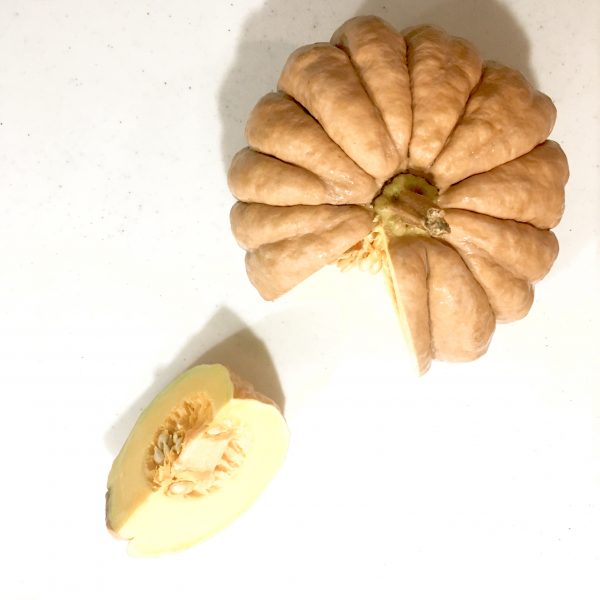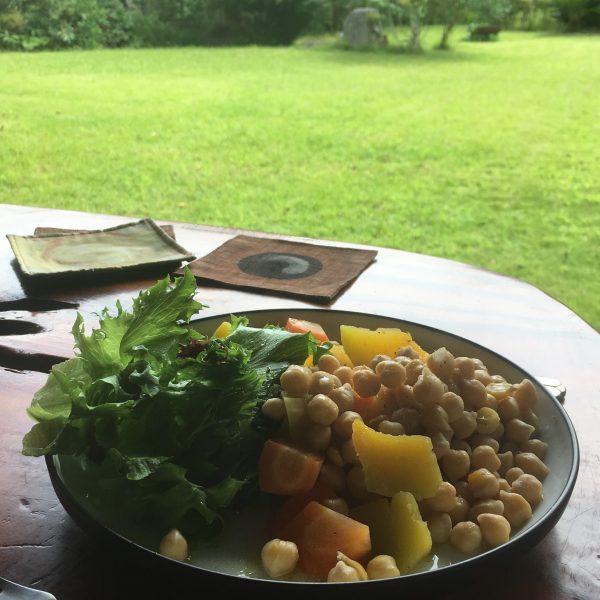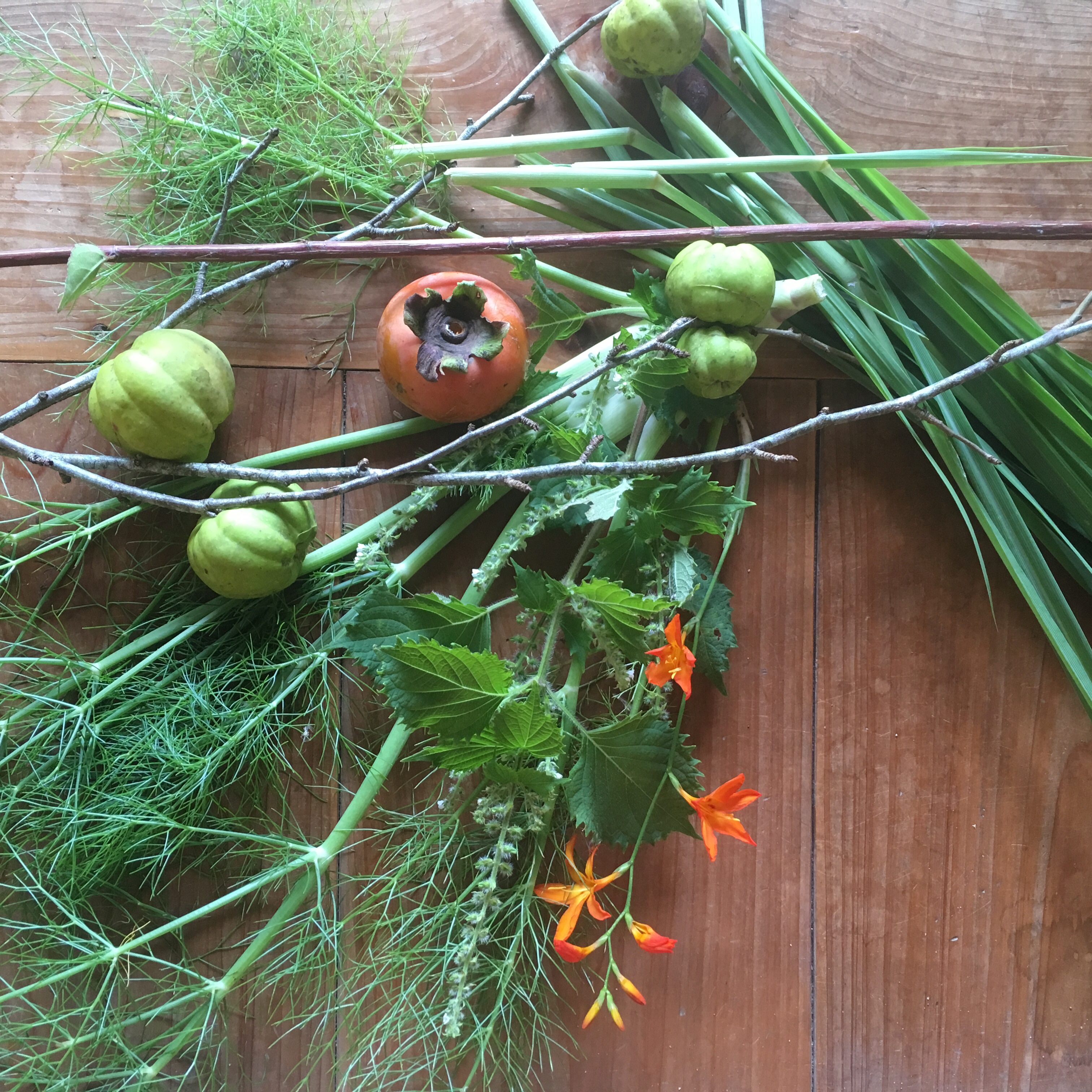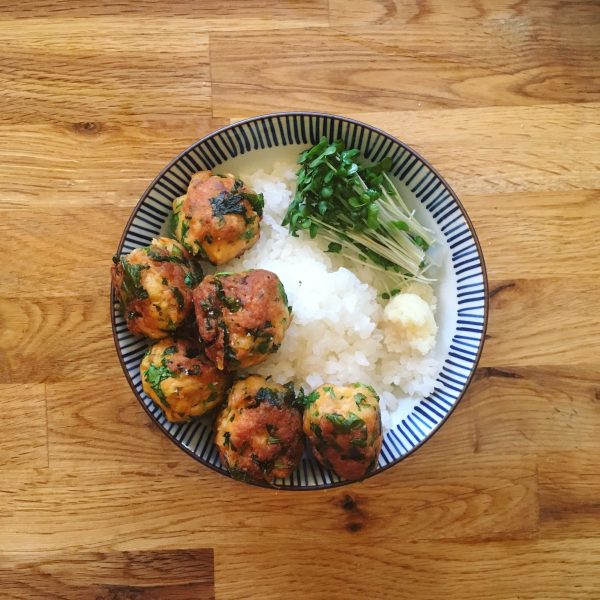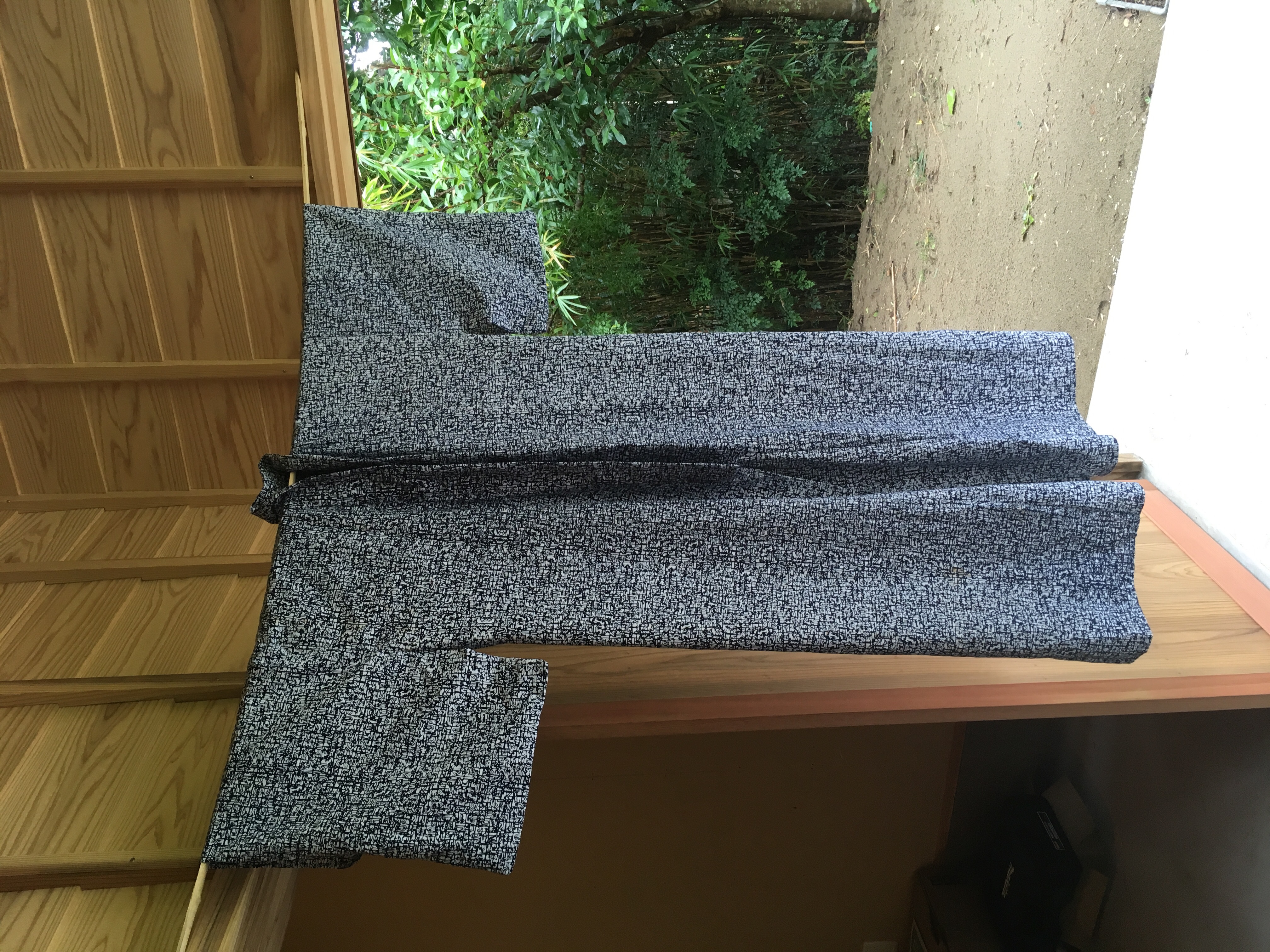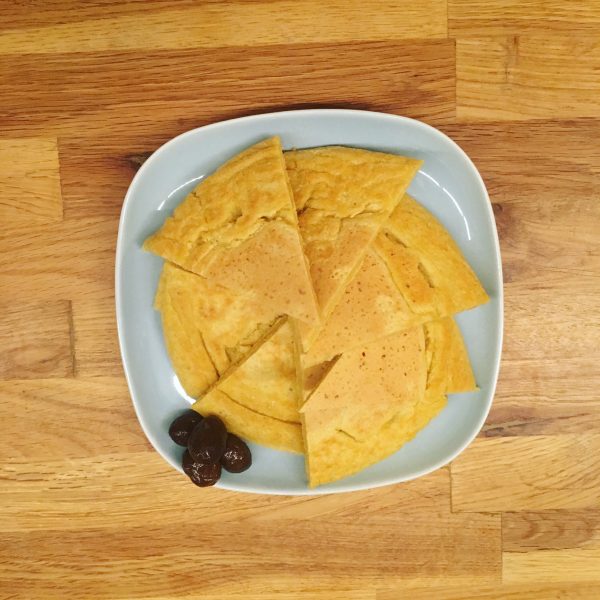When the season for persimmons comes it means that autumn is clearly here and with shorter days, the chilly evenings will be coming soon. And here they are. Not cold enough to tuen the heater on yet, but it’s coming.
While we are not big fans of raw persimmons, like pretty much everyone in Chiba Sotoboso, we have persimmon trees in our garden, two that give sweet persimmons and one that gives bitter ones. Persimmons are like plums in June, impossible to give away!!! Most people don’t even harvest them and their leave-less branches are decorated with beautiful orange fruits. I our gardens the fruits don’t last long as birds happily eat them and that is great. Still I always harvest a few fruits for us as there is one recipe that is my total preferred way of eating persimmons: tofu ae with cucumber.
So here it is:
Persimmon, cucumber and tofu ae:
– 1 persimmon not too soft
– 1 Japanese cucumber
– 1 small block of drained tofu
– 2tbs of sesame seeds
– a bit of salt
Peel and dice the persimmon, slice the cucumber. Grind the sesame seeds, drain very well the tofu* and mix with the salt. Add the persimmon and the cucumber. Stir well and it is ready to serve.
Oh! By the way, I’m testing new mini videos to explain the recipe… checkout below and on IG!!!
* draining tofu is crucial to obtain the perfect creamy consistency. To drain tofu (hard or soft) first press it gently between two boards with a weight on top. Gravity will make it work perfectly for you after 1h. Then in a clean cloth with thin weaving press the tofu to remove the water has shown in the third video below.
http://gentianeetantoine.com/igk/wp-content/uploads/2019/11/video.mov
http://gentianeetantoine.com/igk/wp-content/uploads/2019/11/video-1.mov
http://gentianeetantoine.com/igk/wp-content/uploads/2019/11/video-2.mov
http://gentianeetantoine.com/igk/wp-content/uploads/2019/11/video-3.mov
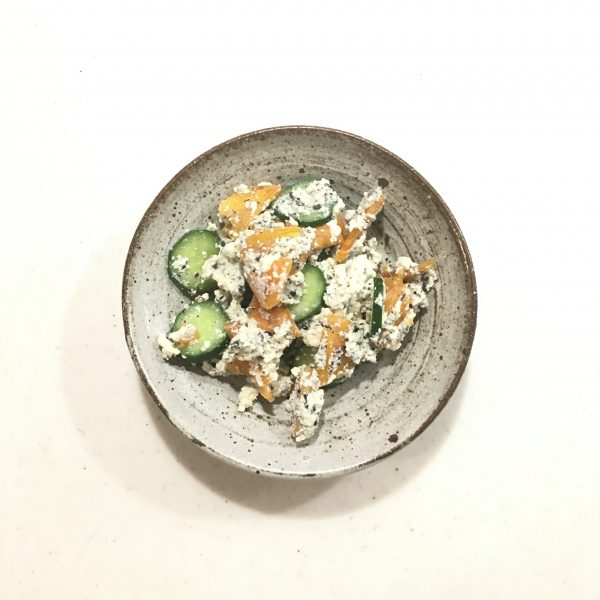
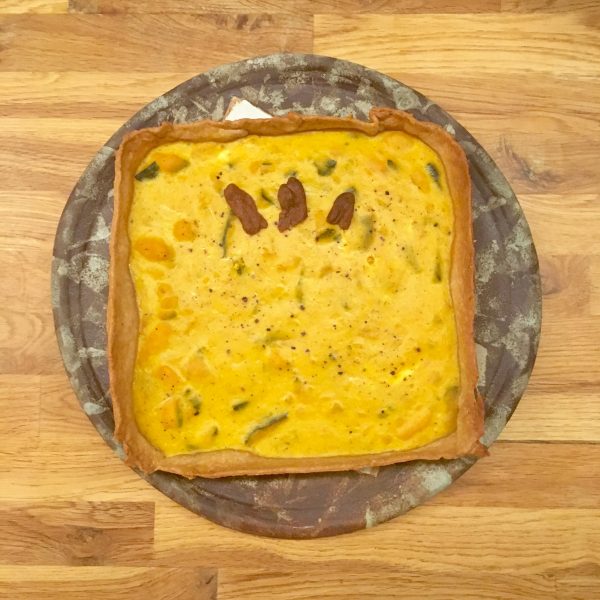

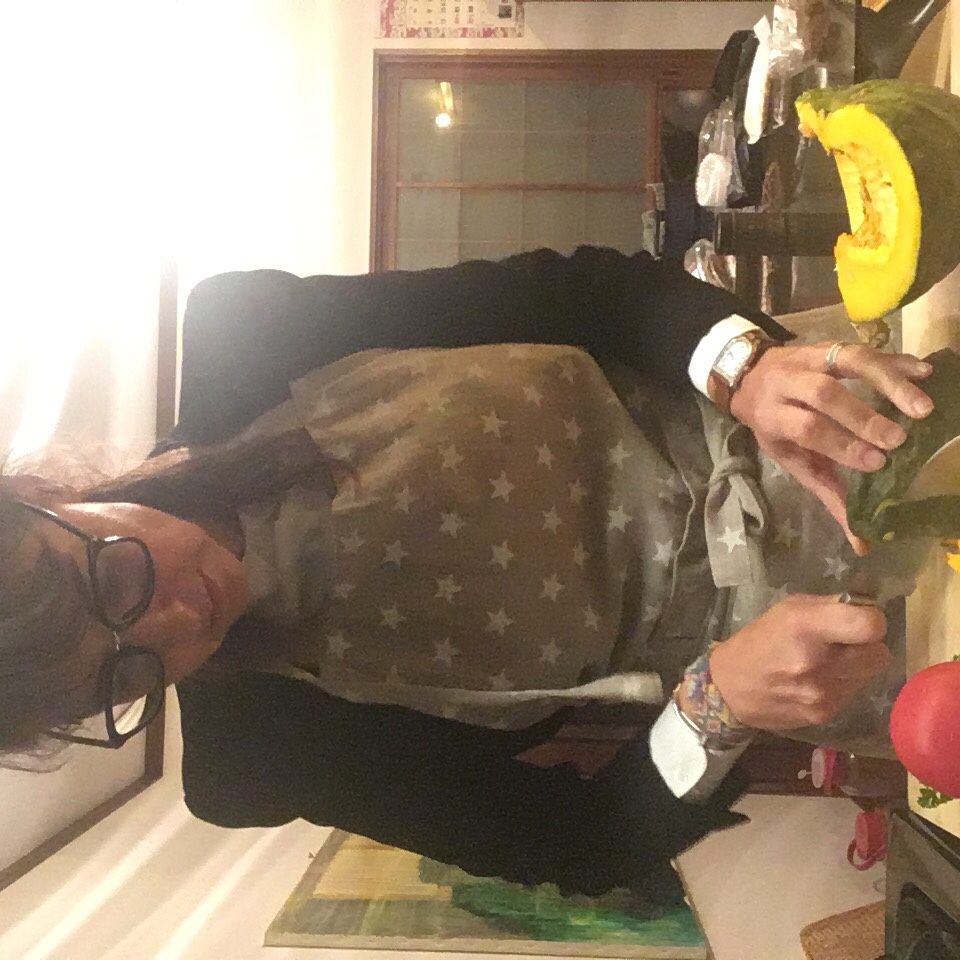 Well I was preparing dinner with the leftover veggies: kabocha and tomatoes. I also picked some fresh parsley in the garden and was thinking about what to do with them when the crave for soba noodles just came. All was decided… And that’s how this recipe of kabocha soba was born. It was so delicious that I really need to share it with you! Moreover because it’s been a while I haven’t shared a proper recipe!!
Well I was preparing dinner with the leftover veggies: kabocha and tomatoes. I also picked some fresh parsley in the garden and was thinking about what to do with them when the crave for soba noodles just came. All was decided… And that’s how this recipe of kabocha soba was born. It was so delicious that I really need to share it with you! Moreover because it’s been a while I haven’t shared a proper recipe!!